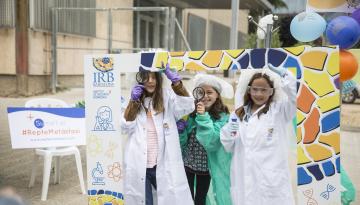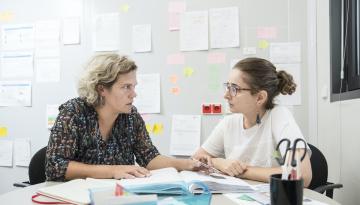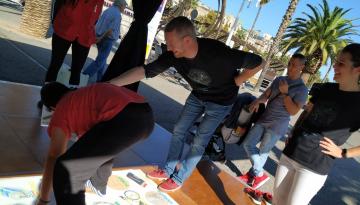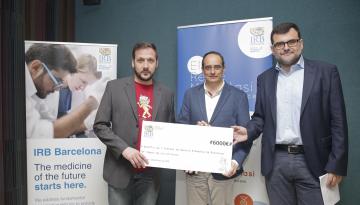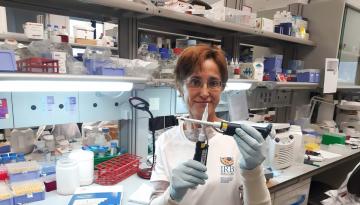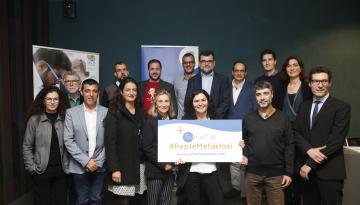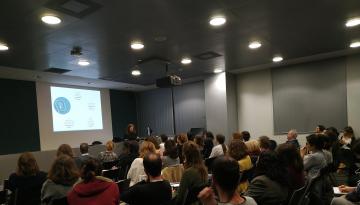Antony Nevin, IRB Barcelona’s 2019 Artist in Residence, has travelled from his home in “the land at the end of the world”—New Zealand—to spent time with us and get inspired by our science.
This is Antony’s first artistic residence. He was attracted to IRB Barcelona because of the many different approaches and fields that we are involved in and because he has always been interested in the connection between creative arts and science. In this regard, during his short stay here, he has been able to get involved in seeding colorectal cells, he has learnt about the blood-brain barrier and the amazing shuttles inspired on bee and scorpion venom, and spent many hours in awe of the amazing images obtained by the digital microscopy facility (just to mention a few of the things he explored).
Antony finds science fascinating and confesses to a childhood passion for rockets. “I grew up when the space race was on and I loved it. For me what is happening here at IRB Barcelona is just like that. There is some amazing exploration but going into the small world. I feel that it is part of my mission to find ways to help people connect with the exciting exploration that’s happening at the molecular and cellular level,” he explains.
Apparently, a lack of confidence and not being much good at maths got in his way of becoming a scientist. But he finds comfort in the fact that there are so many similarities between the creative arts and science. “It’s the idea that you don’t really know where you are going, you might know something about how you are going to get there, you probably don’t know what the result will be or the result will be different from what you ultimately expect… it’s that journey and discovery that I find the most exciting.”
Antony is now back at home. There, under the influence of the aurora australis (the southern cousin of the northern lights), he hopes to spend 3-4 months creating a response to his time here.
Given that Antony identifies with the word “provocateur”, I get the impression his project will hit our senses. “It will be something that you experience physically rather than something that sits on a wall. For me, art is about making a connection between intellect and the emotions. There is a lot of deep thought that goes into science and there is a lot of boring data analysis involving looking at screens and screens of numbers but then those numbers connect back to the physical science of looking down a microscope or splitting something up or pulling out RNA or DNA or making organoids enter something,” he explains.
“I am interested in how the physical and intellectual aspects can be reconciled and how the creative arts can use the 'felt' experience of something to help understand intellectually what is going on. So by using sights, sounds lights, taste, and smell, I am hoping we can understand in a visceral way what is going on with the science,” he continues.
For some of us, art is intimidating. “Not 'understanding' art is a problem of language and it is the same with science. The more obscure you are, the more important the work is. This is about exclusion not about communicating. I position myself more in the design camp than the fine arts camp. What I like about the design world is that we put people and people´s experience in the centre of what is going on. Art is not necessarily about understanding. It might be about provocation, planting a seed, the beginning of a conversation about something… it may act as starting point of an argument that needs to be had... like genetic engineering. The creative arts can provide a forum for the discussion of big ideas,” he says enthusiastically.
Antony has nothing but great adjectives to describe the time he has spent at IRB Barcelona and has some words of advice for those thinking about applying to the Artists in Residence Programme. “Science is a way of explaining and understanding what is going on and creative arts is the same thing. So dive in! Ask lots of questions. Just be open about everything. Look underneath what is the obvious," he says.
We will have to wait patiently for this truly effervescent artist to get back to us. But I have no doubt that he will find a highly creative way to stimulate our senses and make us see science in a different light!
